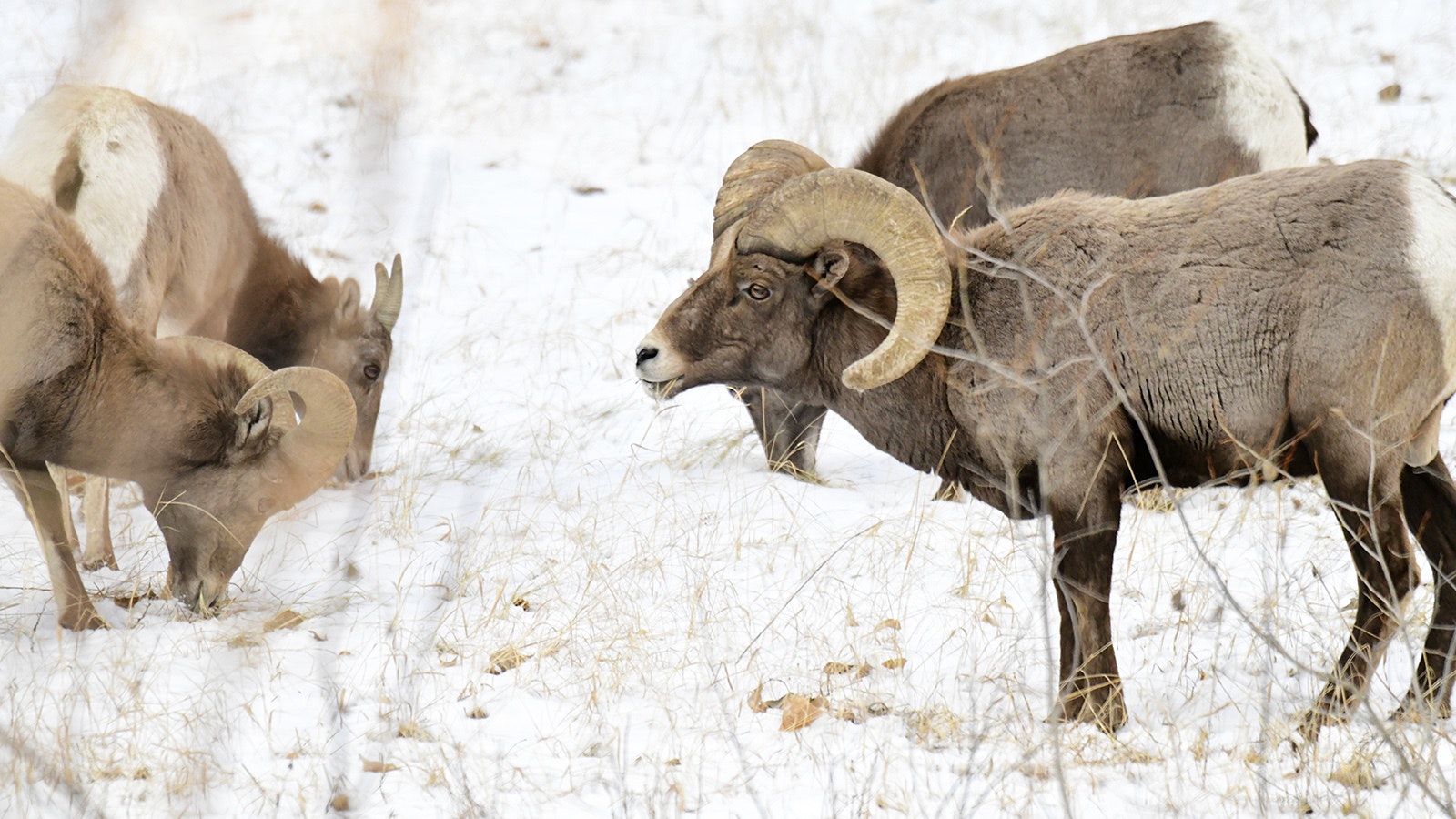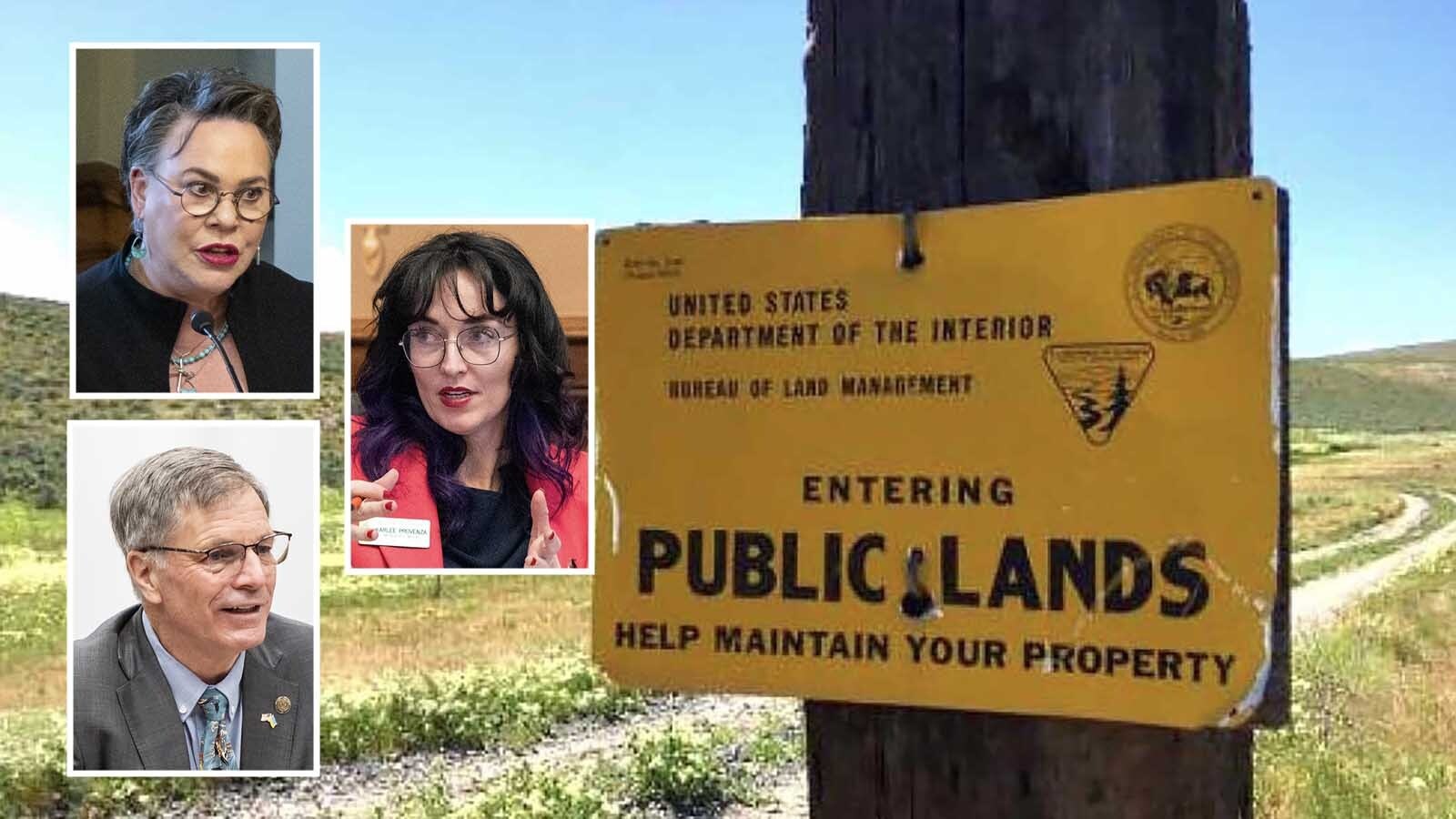Hunters pursuing Rocky Mountain bighorn sheep in Wyoming’s high country are going gray because it takes so long to draw sheep tags, a Wyoming Game and Fish official told state lawmakers Tuesday.
“The average age of a bighorn sheep hunter in Wyoming is 58,” said WG&F Department Director Brian Nesvik while addressing the Wyoming Senate Travel, Recreation and Cultural Resources Committee regarding Senate File 88.
SF 88 would reform the hunting tag drawings for bighorn sheep and other highly coveted species. The committee voted to forward the bill to the Senate floor.
The bill was recommended by the Wyoming Wildlife Task Force, Nesvik said.
The group of hunters, outfitters, wildlife officials and others were charged with examining Wyoming’s hunting and conservation policies and coming up with suggestions for improvements. The task force held its final meeting in December.
Tired Of Waiting
Hunting tags for bighorn sheep in Wyoming are once-in-a lifetime.
That’s also true for Wyoming’s other “Big 5” trophy game species – Rocky Mountain goats, moose, bison and, if and when federal protections for them are lifted, grizzly bears.
The current system for drawing those tags hinges on the accumulation of “preference points,” Nesvik said. Hunters can earn up to 28 points, one for each year they apply for a tag.
Under the current system, applicants with the most points get the best odds for 75% of the tags, while the rest are left for those with fewer points.
Hunters can wait years, or even decades, before drawing a tag – if they draw one at all, Nesvik said.
Committee member Sen. Wendy Schuler, R-Evanston, agreed. She said she has family members who finally gave up after years on end of applying unsuccessfully for moose tags.
Not Everybody Gets A Tag
The bill would do away with the 75%-25% preference point system, Nesvik said.
That system worked well enough when there were more of some species to hunt – such as moose and bighorns – and fewer people applying for tags.
Instead, all the tags would be in a single pool. Hunters could earn one “bonus point” for each year they applied for a tag. Those points could compound for hunters during tag drawings, increasing their odds, Nesvik said.
The system could be phased in after four years, allowing those who have accumulated the maximum preference points one last best shot, he said.
Either way, the drawing system for those once-in-a-lifetime hunts would essentially be a lottery that not everybody will win.
“We simply cannot guarantee everybody (a Big 5) license,” Nesvik said.
Nonresidents May Be Out In The Cold
The bill received mostly favorable testimony.
However, there is some concern that nonresident applicants who have spent years accumulating preference points could lose out, said Bill Novotny, a lobbyist for the Wyoming Outfitters and Guides Association.
Wyoming hunter Joe Sandrini said he’s skeptical that the new system would give younger hunters a better chance.
“This whole thing is like buying a used car” that looks good on the surface, he said. “Unfortunately, after we drive it for a few years, we realize, yeah, it wasn’t really what we wanted or needed.”





